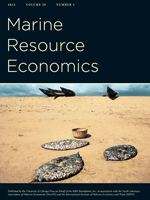Commercial traditional linefish snoek reaches consumers through retail outlets supplied by large hawkers and processors or directly through small hawkers. While the former channel caters to middle- to hlgh-income consumers, the latter mainly services low-income consumers. Retail outlets govern the first chain, while fishers believe hawkers are the lead actors in the second chain based on the thinking that they have a monopoly on the selling of snoek in townships. The real reason most fishers do not practice forward integration, though, is the impracticality of extending value chain functions beyond catching. Three suggestions are put forward for improving the value chain position for fishers: making crew members rights holders in their own right; forward integration into retailing and delivery contracts with processors and fish shops; and/ or direct supply contracts with supermarkets. All these options would require government policy intervention and financial and technical backing for fishers.
JEL Code: Q21.





